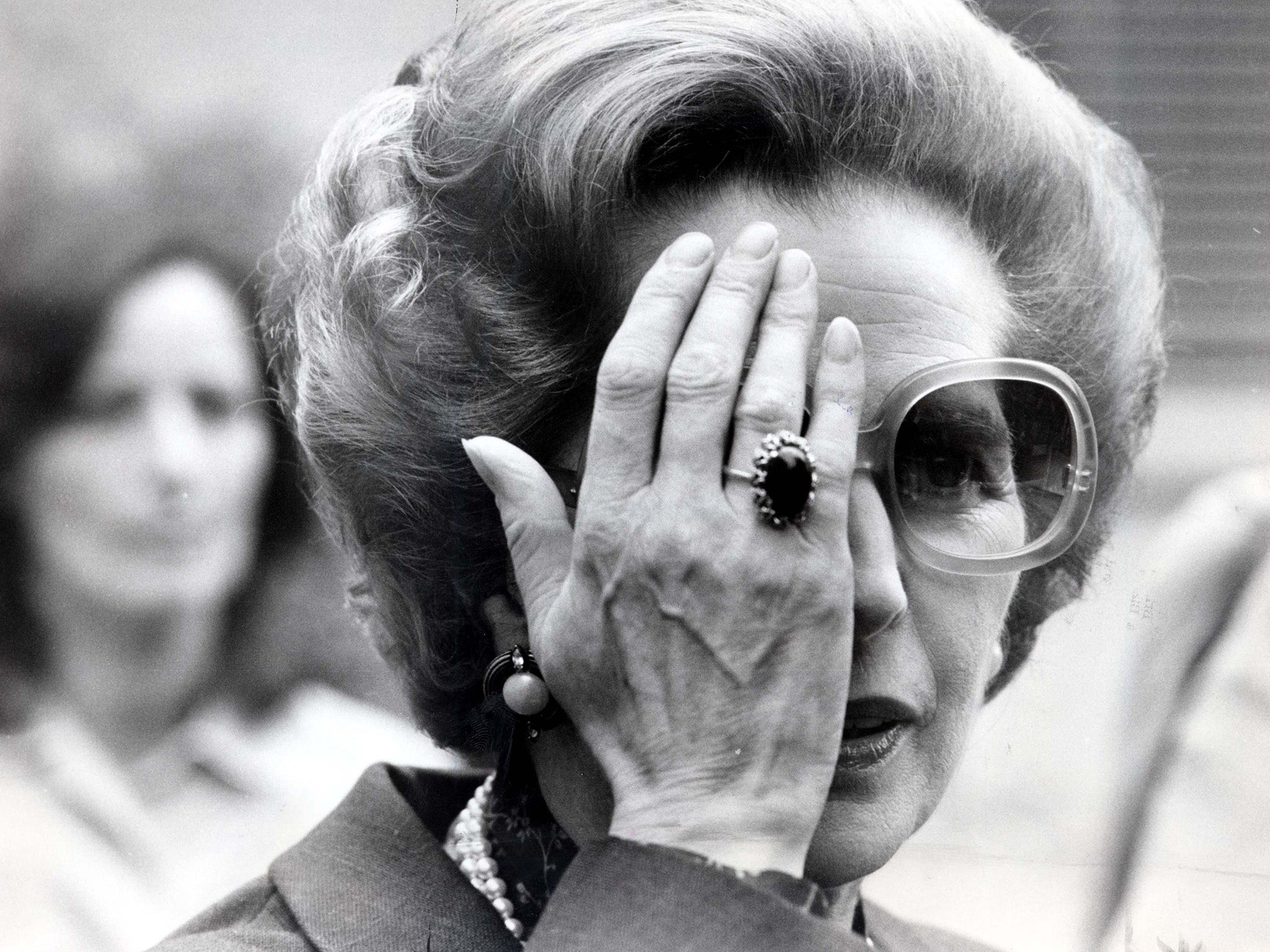Thatcher as a role model for young women? It may not be as desperate as you would think
The key things about role models is that in order to use them properly you don’t have to emulate them, know them or even particularly like them

Your support helps us to tell the story
From reproductive rights to climate change to Big Tech, The Independent is on the ground when the story is developing. Whether it's investigating the financials of Elon Musk's pro-Trump PAC or producing our latest documentary, 'The A Word', which shines a light on the American women fighting for reproductive rights, we know how important it is to parse out the facts from the messaging.
At such a critical moment in US history, we need reporters on the ground. Your donation allows us to keep sending journalists to speak to both sides of the story.
The Independent is trusted by Americans across the entire political spectrum. And unlike many other quality news outlets, we choose not to lock Americans out of our reporting and analysis with paywalls. We believe quality journalism should be available to everyone, paid for by those who can afford it.
Your support makes all the difference.Who is your role model? Chances are that if you have one, it won’t be Mrs Thatcher. Yet Helen Mirren’s suggestion yesterday at the Women of the World summit in New York that the first female British Prime Minister would be a rather good one for young women should not be dismissed.
It is probably just as well she was in America when she said it, as even today it is still not the sort of thing which you could say at a women’s summit in the UK, largely because of the hoary old saw that Mrs T was never regarded as a champion for her sex. And yet of course she was. Who cares that she never promoted women in her cabinet?
Surely the story of the grocer’s daughter from Grantham who achieved the country’s highest office of state, a clever woman who arrived without any particularly helpful starts in life (public school education, wealthy relations, obvious political links), but who nevertheless managed to rebrand a party, define an economic strategy and who was arguably the single most important political force, bar Beveridge, in post-war Britain is an astonishingly inspiring one.
The key things about role models is that in order to use them properly, you don’t have to emulate them, know them or particularly like them. (Mirren has said she is voting Green this year.) They don’t even have to be alive. After running through various politicians, writers and thinkers, the MP and writer Alan Johnson told me that his role model was Anthony Trollope, a formidable intellect who of course worked for the Post Office, as Johnson himself did. “He would write 8,000 words every morning before going to work,” Johnson tells me, with awe.
But as Mirren’s comments suggest, it is girls and young women who should be scanning around for role models, as female cultural influences can still be somewhat atomised, if not actively scant. Young men have many more social structures with ready-made models available to them, not least because there are still far more men in the public eye, as a swift glance at BBC Parliament attests. One also thinks of football teams, of sports in general, the banter of the office floor, the society of the pub or wine bar. None of these institutions are barred to women (unless they have a burning desire to join the Garrick), but the typical female terrain simply does not offer the same scope.
When I sought a job in TV in the late 1980s, I thought about the most visible woman on TV at the time. I have never told Janet Street-Porter that she inspired me to post copious CVs, but she did. As I fed a page of A4 paper through my typewriter in order to write my first feature (yes, quite a long time ago), I was worried that I didn’t have the authority to say what I wanted to say. “Would Julie Burchill say this?” I thought, anxiously. “Damn right she would” was the follow-up thought. I have never met Burchill. She was my virtual hack role model for years, and she did the job pretty well, all things considered.
It is intriguing to pinpoint role models for today’s young women. Mirren was speaking at an event hailing Hillary Clinton’s decision to run for president. Clinton could be a role model to millions of American women, and she certainly campaigns vigorously for women’s rights, but she might be seen as too establishment and perhaps too old to be a personal inspiration. Michelle Obama has actively presented herself as a role model for empowering black women in the States and in the UK, particularly at Elizabeth Garret Anderson School in Islington, where 92 per cent of the pupils are black or from ethnic communities, and whom she has regularly encouraged to follow her lead. Might Nicola Sturgeon, Leanne Wood or Natalie Bennett provide inspiration to young British women? Certainly Sturgeon’s recent performances on TV might provoke more women to take an active interest in politics.
I have no idea whether Helen Mirren, currently on Broadway playing the Queen, has republican tendencies, but I think it is worth noting that she does not cite Elizabeth II but the woman who curtseyed before her on a weekly basis as the relevant role model. Being self-made from Grantham, rather than born privileged from Windsor, seems to be the key as far as inspiration goes.
Join our commenting forum
Join thought-provoking conversations, follow other Independent readers and see their replies
Comments